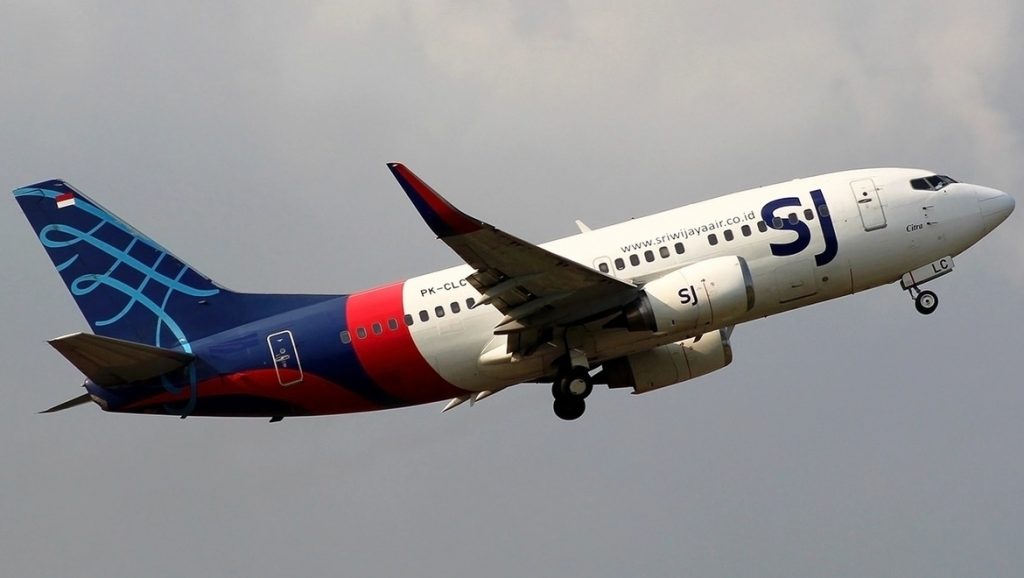
The US Federal Aviation Administration has warned operators of Boeing 737 Classic aircraft to check for possible wiring failures, following the investigation into the January crash of Sriwijaya Air flight SJ182.
Flight SJ182, a 26-year-old Boeing 737-500, crashed into the Java Sea just minutes after take-off from Jakarta on Saturday, 9 January 2021, killing all 62 passengers and crew on board.
Investigators later determined that the crash was caused in part by a malfunctioning autothrottle lever system, which resulted in an imbalance in engine thrust that ultimately sent the plane into a sharp roll and finally a dive into the sea.
While the FAA has said there is as yet no evidence to suggest that the autothrottle problem could be replicated in other aircraft, it has now informed operators of over 1,041 737-300, -400, and -500 Classic series aircraft to inspect the wiring of their own systems.
The FAA will soon also be issuing an airworthiness directive to the same effect.
Under the directive, operators must verify that the flap syncro wire, which plays a key role in the operation of the autothrottle system, is securely connected to the safety sensor.
According to the FAA, a failure of this wire could go undetected by the autothrottle computer and could pose a safety risk.
Boeing earlier informed operators to perform electronic checks of the autothrottle computer to confirm the flap syncro wire if connected within 250 flight hours.
However, the FAA is now requiring the initial electronic check to be performed within 250 flight hours or within two months, whichever occurs first, “to ensure that airplanes with low utilisation rates are addressed in a timely manner”.
Additionally, the FAA is requiring follow-up inspections every 2,000 flight hours after the first.
The air safety regulator said that a faulty connection of this wire could result in the failure of the autothrottle system to detect the position of the aircraft’s flaps if the plane’s engines were operating at different thrust settings due to another malfunction – as was the case in flight 182.
The FAA reiterated that there is no evidence to suggest that this wiring issue had a role in the accident, however the subsequent investigation into such a concern was reason enough to issue the directive.
Newer iterations of the jet, such as the 737 NG and 737 MAX, are not affected by the directive.
In its preliminary investigation into the crash of SJ Flight 182, Indonesia’s air safety investigation bureau, the KNKT, noted that the plane climbed to 8,150 feet after take-off from Jakarta, before the left engine throttle lever moved back, while the right lever stayed put.
“We don’t know if it’s broken or not, but it’s an anomaly because the left moved far back, the right did not as though it was stuck,” KNKT investigator Nurcayho Utomo said in a press conference.
Then, at 10,900 feet, the autopilot reportedly disengaged, which caused the plane to roll to the left by over 45 degrees, and start its dive, the report said.
It had been previously reported that the aircraft had pre-existing maintenance problems with its autothrottle system, which automatically controls the plane’s engine power. However, the report states the autothrottle system was repaired by engineers four days before the crash.
Additionally, pilots can easily manually control the throttle meaning a malfunctioning autothrottle is not likely to be the single cause of such an accident. Both pilots are said to have been very experienced, with the captain accruing over 17,900 flight hours over his career, and the first officer 5,100.
Last month, World of Aviation reported that Indonesian investigators had finally recovered the cockpit voice recorder (CVR), which contains the recordings of the crew’s conversations in the final minutes before the aircraft crashed.
The KNKT has confirmed that the aircraft’s recently-recovered CVR does contain the relevant voice recordings from within the cockpit in the hours and minutes leading up to the crash.
However, the recordings themselves, nor the information they contain, are not yet available to the public.















